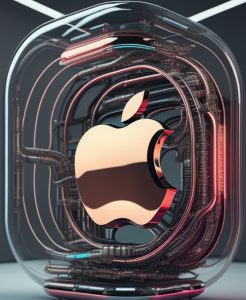
Apple does not change its traditions, but this year it decided to change something unexpectedly. Instead of the usual iOS 19, which everyone expected to see after the previous version, the company presented iOS 26 at once. Such a jump in numbers was surprising at first, but the explanation turned out to be simple: now the system will be named after the year it was released. No confusion, linear and intuitive. So iOS 26 means “2026/created in 2025”, not some conventional 19th release. It’s the same with iPadOS, watchOS, and macOS.
But it’s not just the number that’s new. iOS 26 is essentially a fresh rethinking of what a smartphone should look like in 2025. And it’s not just about cosmetic changes – the interface, artificial intelligence, notifications, FaceTime, camera, even the music experience have all undergone a profound transformation. TechnoVisor will tell you more about everything later in this article.
Liquid Glass
Let’s start with the first thing that catches your eye – the appearance. Apple calls the new design “Liquid Glass” – or “Liquid Glass” with a real sense of depth and transparency. Shadows, reflections, soft contours – everything looks much more alive, as if you’re not holding a phone, but something between a hologram and a piece of glass.
The system visually resembles VisionOS, the operating system of Apple’s Vision Pro virtual glasses. And this is no coincidence: Apple wants to create a common ecosystem where interfaces are similar and interaction between devices is smooth and intuitive. Already, notifications, Safari, photos, music, and settings look completely new.
AI
But design is not the only thing that has become the main feature here. The biggest emphasis in iOS 26 is on artificial intelligence – Apple has officially launched its own Apple Intelligence platform. This is not a separate application but a set of functions that permeate the entire system. For example, artificial intelligence can now rewrite your emails in a more polite or less formal style. Or offer a reply to a message in a few clicks. In text applications, you can select a fragment and click “Shorten”, “Make it clearer”, “Paraphrase”.
Another possibility is visual recognition (something similar has actually been present in Android smartphones for a long time through the Google Lens application). By simply touching an image or object in the camera, the iPhone will be able to recognize what kind of thing it is, provide information about the product, show the price, and offer to buy it online. In addition, there is support for generative artificial intelligence – you can create your own image (for example, “a cat on a bicycle in the style of 3D animation,” etc.) – and the iPhone will literally draw it in a second.
An interesting new feature is the introduction of ChatGPT – it is now built right into the system. When you need to quickly explain something or create a plan, you just need to call an assistant and everything happens instantly. It works smoothly, without the feeling of a third-party service.
The functionality of the Messages app has also undergone changes. It now allows you to create polls, respond with new emojis (even manually created ones, called Genmoji), and make video calls and send audio with automatic language recognition and translation in real time. This last feature is very relevant when you communicate with people from abroad. You speak in Ukrainian, and the other end can hear you in English. And vice versa. And the voice remains similar to yours.
“Camera and Photo have also received a batch of innovations. For example, you can create 3D wallpapers from photos of people, animals, and other objects that look like they’re about to leave the screen. The shooting modes are faster, the interface is cleaner, and a partial screen recording mode has been added to help explain something in a particular application/area of the display.
Apple Music has added the option of live translation of lyrics, and the new AutoMix feature turns ordinary listening into something similar to a DJ set, where tracks smoothly flow into each other.
Apple Maps has become smarter – it remembers frequent routes, reports traffic jams, and allows you to view your movement history in the style of “where I was on Friday at 4:30 pm.” Wallet supports digital passports, boarding passes with terminal maps, and the ability to log in to buildings using a smartphone.
We should also mention the Games app as a new center for all your games. There you can see statistics, saves, and compete with friends – all in one place. And CarPlay has become safer: unnecessary notifications are minimized, while the most important ones remain on the screen.
The update will be available in the fall, traditionally after the release of new iPhone 17 models. All devices starting with the iPhone 11 will be supported. Unfortunately, owners of the XR and older models will be left out of the update, and this is also part of Apple’s new strategy: not to try to support everything, but to provide the best quality for current devices.
As a result, iOS 26 is a holistic reimagined system in which artificial intelligence does not dominate, but fits seamlessly into everyday life. Everything has become a little smarter, more beautiful, and more convenient.

